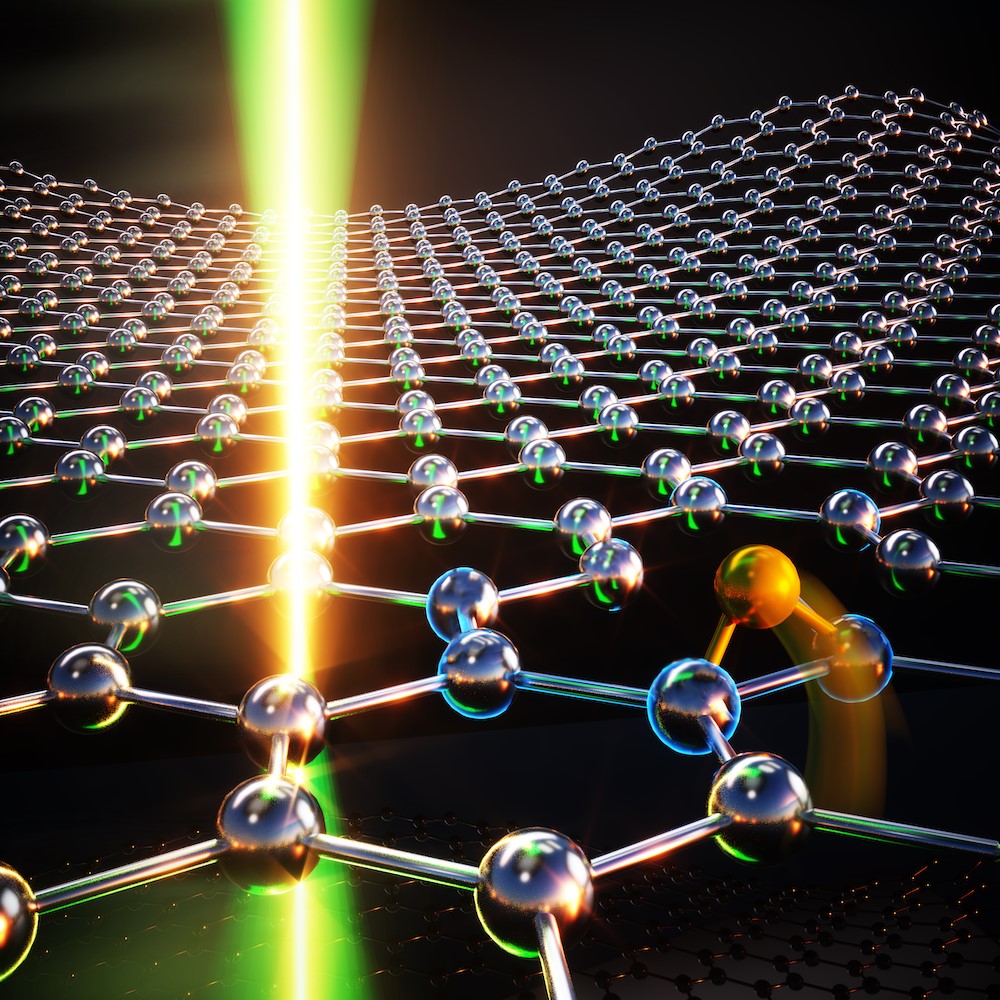A team of researchers led by Philip Walther at the University of Vienna carried out a pioneering experiment where they measured the effect of the rotation of Earth on quantum entangled photons.
Tag: Faculty of Physics

“Hot” graphene reveals migration of carbon atoms
The migration of carbon atoms on the surface of the nanomaterial graphene was recently measured for the first time. Although the atoms move too swiftly to be directly observed with an electron microscope, their effect on the stability of the material can now be determined indirectly while the material is heated on a microscopic hot plate. The study by researchers at the Faculty of Physics of the University of Vienna was published in the journal Carbon.
A new dimension in magnetism and superconductivity launched
An international team of scientists from Austria and Germany has launched a new paradigm in magnetism and superconductivity, putting effects of curvature, topology, and 3D geometry into the spotlight of next-decade research. The results are published in Advanced Materials
Researchers find a way to check that quantum computers return accurate answers
Quantum computers become ever more powerful, but how can we be sure that the answers they return are accurate? A team of physicists from Vienna, Innsbruck, Oxford, and Singapore solves this problem by letting quantum computers check each other.
Modeling uncovers an “atomic waltz” for atom manipulation
Researchers at the University of Vienna’s Faculty of Physics in collaboration with colleagues from the Oak Ridge National Laboratory in the USA have uncovered a non-destructive mechanism to manipulate donor impurities within silicon using focused electron irradiation.
Emergent magnetic monopoles controlled at room temperature
Three dimensional (3D) nano-network promise a new era in modern solid state physics with numerous applications in photonics, bio-medicine, and spintronics. The realization of 3D magnetic nano-architectures could enable ultra-fast and low-energy data storage devices. Due to competing magnetic interactions in these systems magnetic charges or magnetic monopoles can emerge, which can be utilized as mobile, binary information carriers.
From chemical Graphs To Structures
Three-dimensional (3D) configurations of atoms dictate all materials properties. Quantitative predictions of accurate equilibrium structures, 3D coordinates of all atoms, from a chemical graph, a representation of the structural formula, is a challenging and computationally expensive task which is at the beginning of practically every computational chemistry workflow.
Atomic-scale tailoring of graphene approaches macroscopic world
Properties of materials are often defined by imperfections in their atomic structure, especially when the material itself is just one atom thick, such as graphene. Researchers at the University of Vienna have now developed a method for controlled creation of such imperfections into graphene at length scales approaching the macroscopic world. These results, confirmed by atomically resolved microscope images and published in the journal Nano Letters, serve as an essential starting point both for tailoring graphene for applications and for the development of new materials.
DNA-based material with tunable properties
While DNA is often idealised as the molecule of life, it is also a highly sophisticated polymer that can be used for next-generation materials. Beyond the fact that it can store information, further fascinating aspects of DNA are its geometric and topological properties, such as knotting and super-coiling. Indeed, very much like a twisted telephone cord, DNA is often found coiled up inside bacteria and other cells and even knotted in viruses.